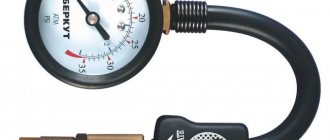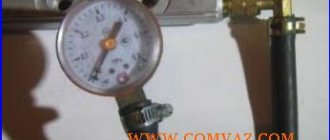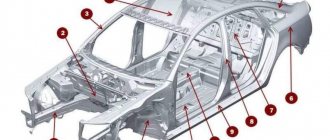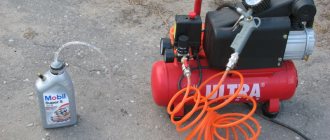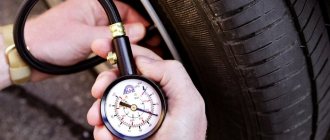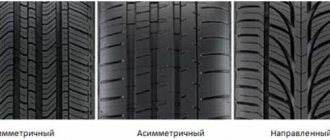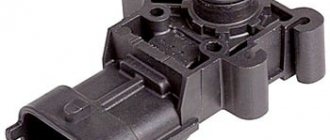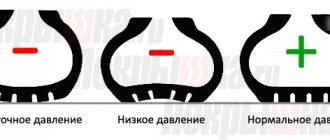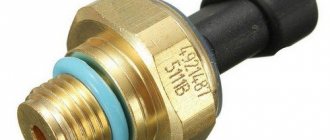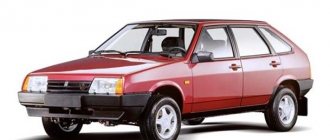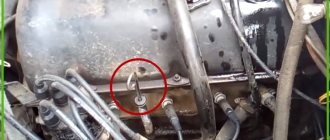A special pressure gauge for measuring tire pressure allows you to get accurate data at any time. Thanks to the device, it is possible to see the amount of air in the tires of a car, bicycle, motorcycle and other equipment. The unit itself that measures data in 2021 comes in two designs:
- mechanical;
- electronic.
Each variety has its own design features and advantages. Additionally, units are divided according to installation method. There are stationary and mobile ones. Next, you should reveal the unique properties of each model.
- Stationary. They are distinguished by the absence of access to the nipple (they are screwed tightly into the equipment). The devices are mounted on a special gun, compressors, structures where it is necessary to constantly monitor the supply of air or other gas.
- Mobile or pocket. Compact version for individual use. The device has a connecting flange for the wheel nipple, which allows you to measure pressure in any unit without the use of complex technology or bulky equipment.
The third group, called rack and pinion, stands out separately. Such pressure gauges are mechanical; their operating principle is based on the deformation of a cylindrical spring inside an elongated body. The advantages of the product include good accuracy and reliability. Buyers cite the need for careful handling as a disadvantage - the sleeve is fragile.
Externally, the models look like stationery pens.
Mechanical pressure gauge for measuring tire pressure
A classic type of measuring device designed to monitor the pressure in tires of trucks and cars, as well as other wheeled vehicles.
The principle of operation is based on the effect of elastic deformation of a tubular spring connected through a special coupling mechanism to the dial arrow. The measurement can be made due to the fact that air enters the tube from one end. The second half is tightly sealed. A similar scheme is often found in pressure gauges made in the USSR.
More modern versions consist of two ultra-sensitive plates - membranes. The first is connected to the tribic-sector mechanism, and the second is sealed into the holder. As the pressure increases, the free membrane bends and the instrument needle rises.
Types of pressure gauges for cars
Devices for checking the air density in car tires are different.
Let's briefly look at the pros and cons of these types.
Rack and pinion
Least popular, outdated look. It is distinguished by its reliability in measuring tire pressure. Impractical, may fail in wet weather and low temperatures. Not very convenient to use. Plus - affordable price.
Switches
Another name is analog pressure gauges. Currently the most common device among domestic car enthusiasts. They are satisfied with the low cost and accurate readings.
Electronic or digital
Divided by class. The higher it is, the more accurate the device’s operation, but, accordingly, the more expensive it is. The downside is that the device is battery dependent. You need to monitor not only the presence of a pressure gauge in the car, but also the charge level.
Electronic pressure gauge for determining tire pressure
An electronic meter is a new generation of devices powered by a battery or the vehicle’s on-board network. Modern units can set the indicator in the wheels with a minimum error, which is extremely popular on low-pressure cylinders.
The introduction of new technologies has made it possible, in addition to classical designs, to create autonomous monitoring systems such as TPMS, installed on the latest generation machines.
The device probes the actual indicators inside the tires and transmits them to the on-board panel or smartphone.
Why does a driver need a pressure gauge?
Digital car pressure gauge
Some car owners claim that the procedure for inflating tires in a car is a waste of time, and a difference of 0.2 atmospheres will not critically affect the operation of the vehicle as a whole. Let’s say right away that this approach is fundamentally wrong. Both too low and too high tire pressure can affect the main parameters of the vehicle. The car will be less stable while driving, and this may also affect its overall efficiency.
To begin with, we suggest you find out the consequences of too high air pressure in your tires:
- First of all, it reduces comfort for the car owner and passengers while driving. Due to overinflated tires, the damping characteristics of the chassis drop significantly, and the driver will feel even small bumps. Moreover, with excessive tire pressure, the level of vibration will be transmitted to all components of the vehicle body, including those located in the car interior.
- If you drive into a hole or bump suddenly, there is a high probability of tire damage. As a result of the air pressure in the system being significantly higher than normal, the tire stretches slightly. Under external influence, that is, an impact, the result can be critical even for high-quality and expensive rubber. As a result, overinflated tires may develop a bump, crack, or even worse, a rupture.
- This can also lead to accelerated wear of the central part of the rubber, because in fact, overinflated tires always last much less. Moreover, due to excess air pressure, it is the central part of the tread that suffers first. As practice shows, car owners who always overinflate their tires or simply do not control the pressure level are forced to change tires much more often.
- The vehicle's handling deteriorates. When pumped, the rubber will more resist the overall weight of the vehicle. As a result, the contact surface of the car wheel with the road surface will be lower, which will also affect the car’s handling.
- Damage to the chassis. Since over-inflating leads to a drop in the damping characteristics of the wheels, the maximum load on the suspension will be higher, and accordingly, this will lead to accelerated wear of the suspension components. We are talking about springs, shock absorbers and other elements.
- Wheels with different pressures brake differently, which can lead to skidding (video author: Secret Garage).
But underestimated tire pressure will be more dangerous for the car driver.
As a result, the following problems may occur:
- Wheel tire deformation. Due to the reduced parameter, there is a high probability of rubber bending, which can simply lead to its rupture. This option is more possible if other factors affect the tires, for example, high temperatures, high driving speeds, and performing various maneuvers.
- Overheating of rubber. Due to the fact that the contact area between the car wheel surfaces and the road surface increases, this causes overheating, which is especially important in the summer heat. As a result, the rubber frame of the car wheel is destroyed, so the likelihood of tire damage is very high.
- To complete wear of the shoulder areas. As we have already reported, when the air pressure level in the wheel drops, the rubber deforms. At this moment, the load mainly falls on the side parts of the tread. Accordingly, this can ultimately lead to accelerated destruction, as well as the need to replace the rubber.
- There is the possibility of hydroplaning. As the contact area increases, the risk when passing through puddles also increases. After all, the rubber actually simply slides over the water surface, and accordingly, the controllability of the vehicle decreases, especially at high speeds.
- There is a possibility of self-disassembly. Since the tire pressure level is lower, the rubber generally does not adhere well to the iron wheel rim. As a result, when performing sharp maneuvers, the tires may come apart. This will affect not only the handling of the vehicle, but also the safety of the driver.
- The vehicle's fuel consumption may be increased. Again, due to the increase in the contact area between the wheel and the road surface, there is an increase in resistance during driving. As a result, the engine becomes more voracious. In fact, if the tires are poorly inflated, gasoline consumption may increase by about 5% (author of the video - Buy in China).
Tire pressure indicator on the instrument panel
In new generation cars, the technology of automatically measuring pressure inside tires is widespread. The operating principle of the system is as follows.
- A sensor equipped with a radio transmitter performs a check in real time and sends a signal to the receiving antennas.
- The catcher or router receives the pulse and then sends the information to the computer.
- The operating system transforms the transmission into digital and displays the data on an indicator or display.
Such units can be standard or separately installed. The sensor itself is mounted inside the wheel or instead of the nipple cap, depending on the modification.
Rating of the best pressure gauges for measuring tire pressure
There is a large amount of measuring equipment on the domestic market. But choosing a truly high-quality device is difficult. The further rating is based on customer reviews and popularity in retail outlets.
5th place: Muscle M30
Price from 650 rub. The last place is occupied by a good digital meter of domestic production. Overall a decent model with a comfortable and stylish design. The spool is pressed to a sufficient depth, which allows you to set the actual value inside the wheel without additional manipulations. There is also a tip light.
The disadvantages include sensitivity to shaking and power problems - the batteries quickly die.
Advantages:
- minimum weight;
- compact body.
Flaws:
- batteries run out quickly;
- afraid of excessive shaking.
4th place: Torero
Price from 1000 rub. Next on the list of the best pressure gauges is an electronic model made in a metal case. The stylish design with a pistol grip is complemented by good accuracy in measuring car and other tires.
There is sufficient functionality and reliability here. The program contains three generally accepted gradations.
Advantages:
- durable body;
- there are three gradations;
- holds a charge for a long time.
Flaws:
- high price;
- It is inconvenient to look at the device readings.
3rd place: Heyler Aero Moment Pro
Price from 300 rub. Cheap and cheerful. A basic mechanical meter is not the most accurate, but its reliability and ease of use are excellent. The ergonomics of the unit are represented by an air release valve, a rubberized body and a reliable clamping head. This combination allows the candidate to rise to third place. However, some buyers complain that there is a high probability of buying a fake.
Advantages:
- minimum price tag;
- convenient to use;
- durable body.
Flaws:
- When purchasing, you must check the veracity of the testimony.
2nd place: Daewoo DWM 7
Price from 600 rub. The Korean electronic device is slightly inferior to the leader. Thanks to the high accuracy of the indicators and three gradations of units of measurement, it is possible to obtain accurate data from any wheel. The only complaint from users is that the body is too small - it is inconvenient to hold it with a large hand.
Advantages:
- good accuracy;
- reliable design;
- works in severe frost.
Flaws:
- For a motorist with large hands, it is better to choose a less compact model.
1st place: Berkut Digital
Price from 100 rub.
A version tested by hundreds of users, presented in a user-friendly design. The measuring device has an error of 0.05 At, which is unattainable for its closest analogues. Ease of operation is complemented by economical battery consumption. The only downside is that the display freezes when exposed to the cold. The instructions say that the minimum operating temperature is 0°C.
Advantages:
- excellent accuracy;
- comfortable body;
- The screen is easy to read.
Flaws:
- not intended for use in cold conditions.
How to choose a device for measuring tire pressure
The correct choice of a car pressure gauge is based on such factors.
- Operating principle. Mechanical or electronic is a difficult question due to the merits of both candidates. Pointer versions are more reliable and work in any conditions. Digital ones come out ahead due to their accuracy, but the need to change batteries throws them off the map.
- The presence of several gradations. The measurement scales PSI, BAR, At are the most popular. However, if you choose a version with one designation, it is preferable to focus on “domestic” atmospheres.
- Presence of a relief valve. Mandatory in car versions.
Taking into account all the factors, the question of determining the model will go away on its own.
Pressure gauge testing
For testing, take a standard pressure gauge with an accuracy class of 0.4. The measurement scale is graduated in atmospheres.
First, pressure is built up in the receiver, then the device under test is connected to it. The error is determined by the difference in readings of the tested and reference pressure gauge. According to GOST requirements, tire devices for motorists must have an error of no more than 0.1 bar.
During testing, measurements are taken at pressures of 1, 2, 3 atmospheres. At the end of the initial check, cyclic pressure measurements are carried out in the units (up to 3 atmospheres). Pressure gauges are tested to determine whether they get tired. After several dozen cycles, the accuracy should not change.
How to use a pressure gauge to measure tire pressure
Checking the air volume inside your tires is quite simple using a standard pressure gauge. However, this must be done correctly. The instructions for a standard device look like this.
- Remove the dirt cap from the vehicle nipple.
- Turn on the power (for electronic versions).
- Press the valve onto the wheel nipple.
- Hold for 1-2 seconds to stabilize the device’s performance.
- Check the information on the dial or scale.
This sequence allows you to accurately measure the pressure inside the wheels. If necessary, the procedure can be watched on video.
What should you consider when choosing a pressure gauge?
Parameters that are important to consider when purchasing a device. This information is necessary if you do not have the exact brand of the device, or the model you need is not available, and you need to choose the right analogue
Measuring range parameter.
This is the most important parameter. Standard range of pressure gauges: 0-1, 0-1.6, 0-2.5, 0-4, 0-6, 0-10, 0-16, 0-25, 0-40, 0-60, 0-100, 0-160, 0-250, 0-400, 0-600, 0-1000 kgf/cm2 1kgf/ms2=0.980665 bar=0.0980665 MPa=98.0665 kPa.
Standard range of pressure ranges for pressure and vacuum gauges: -1..+0.6, -1..+1.5, -1..+3, -1..+5, -1..+9, -1..+15, -1 ..+24 kgf/cm2=bar=atm=0.1MPa=100kPa
Standard range of pressure ranges for vacuum gauges: -1..0 kgf/cm2=bar=atm=0.1MPa=100kPa.
If you are in doubt about which scale the device is needed for your purposes, when choosing a range, the main factor is whether the operating pressure falls in the range from 1/3 to 2/3 of the measurement scale.
When choosing a scale range, you need to know that the operating pressure should fall in the range from 1/3 to 2/3 of the measurement scale. To ensure stable operation, you should buy a device with a scale of 0-10 atm, since a pressure of 5.5 atm falls in the range from 1/3 to 2/3 of the scale of 3.3 atm and 6.6 atm, respectively. Provided that the pressure is less than 1/3 of the scale, the error in pressure measurement increases significantly. Provided that the measured pressure is more than 2/3 of the scale, the device operates in overloaded mode, which entails a reduction in the service life of the pressure gauge.
Accuracy class parameter
Shows the permissible percentage of error in the measurement results of the device from the measurement scale.
There is a standard range of accuracy classes for pressure gauges: 4, 2.5, 1.5, 1, 0.6, 0.4, 0.25, 0.15. You can calculate the pressure gauge error yourself. For example, if your device is rated at 10 atm and has an accuracy class of 1.5, the permissible error is 1.5% of the measurement scale (0.15 atm). If the error of your pressure gauge exceeds this value, the device must be replaced. Without special equipment, it is impossible to determine that the device is faulty. Only a specialized organization that has a testing installation with a pressure gauge of a high accuracy class, which is the standard, can establish a discrepancy in the accuracy class. The problem pressure gauge and the reference device are connected to the pressure line, and then the readings are compared.
Pressure gauge diameter parameter
This parameter is important for devices with a round body. Standard diameters: 40, 50, 63, 80, 100, 150, 160, 250 mm.
Location of the fitting.
There are two options. Radial arrangement - the connecting fitting comes out of the pressure gauge from below. End - the fitting is located at the rear, on the back of the device.
Connecting thread
The most common types of threads for pressure gauges are metric and pipe threads. There is a standard range of thread types: M10x1, M12x1.5, M20x1.5, G1/8, G1/4, G1/2. Devices from imported manufacturers are characterized by pipe threads. For domestic pressure gauges - metric.
Intervalidation interval.
The period after which the pressure gauge must be calibrated is called the calibration interval. New devices have initial factory verification. This is evidenced by the verifier's mark located on the dial or on the pressure gauge body, and a mark in the passport. Primary verification lasts for 1 or 2 years. For pressure gauges that are used for personal purposes, verification is not critical, so you can choose any pressure gauge. For departmental facilities - factories, furnaces, heating points, etc., after the expiration of the initial verification period, the pressure gauge is subject to re-verification at the center of standardization and metrology, or in specialized organizations that have a license for verification and the corresponding equipment. You should know that re-verification, as a rule, costs more than buying a new device, or is equal to it. In addition, a fee for returning the device is added to the amount. If the pressure gauge does not pass re-verification, you will also have to pay for repairs and subsequent verification.
How to measure tire pressure with a compressor
You can correctly check the pressure inside the tires with a compressor as follows.
- A measuring device is mounted on the working hose. In some modifications, the pressure gauge is built into a special gun or handle.
- Attach the compressor head to the nipple and under the influence of the air flow from the tire, the arrow will rise. This is the pressure inside the wheel.
However, some models require you to release some air from the device tank for a more accurate reading.
How to find out the tire pressure of your car
A car is a technically complex device. The operation of all components is precisely calculated by engineers. In order for the car to meet factory specifications, the automaker informs the owner that the operating parameters are being observed. One of these parameters is “tire pressure”. Requirements for the volume of pressure in the wheels are published in the operating instructions.
In addition, the information is duplicated by a sticker (nameplate) on the pillar in the driver's doorway. The plate indicates: tire size, wheel dimensions and air pressure. Sometimes, the sticker is located in the passenger door frame or on the inside of the gas filler flap. The unit of measurement for pressure can be indicated in bars (Bar), kilopascals (kPa) or pounds (PSi).
Prices
The average price of products starts from 150 rubles and ends at 2500 rubles. The following models can be taken as an example.
| Model | Cost RUR | vendor code |
| AS-107 attack aircraft | 800 | 129959 |
| Dollex | 320 | MSC-07 |
| Snap-on | 1100 | YA111A |
| Golden Snait | 750 | GS9203 |
Average values
Car manufacturers recommend pumping tires within 1.9-2.2 atmospheres.
It is important that the wheels on the same axle are inflated equally. It is considered normal if the rear wheels are inflated 0.2 atmospheres more. But make sure that the maximum pressure does not exceed the permissible pressure indicated on the tire.
Consequences of incorrect tire pressure. If a tire is overinflated or underinflated, the tread will wear out much faster, and tire pressure also affects handling and fuel consumption.
